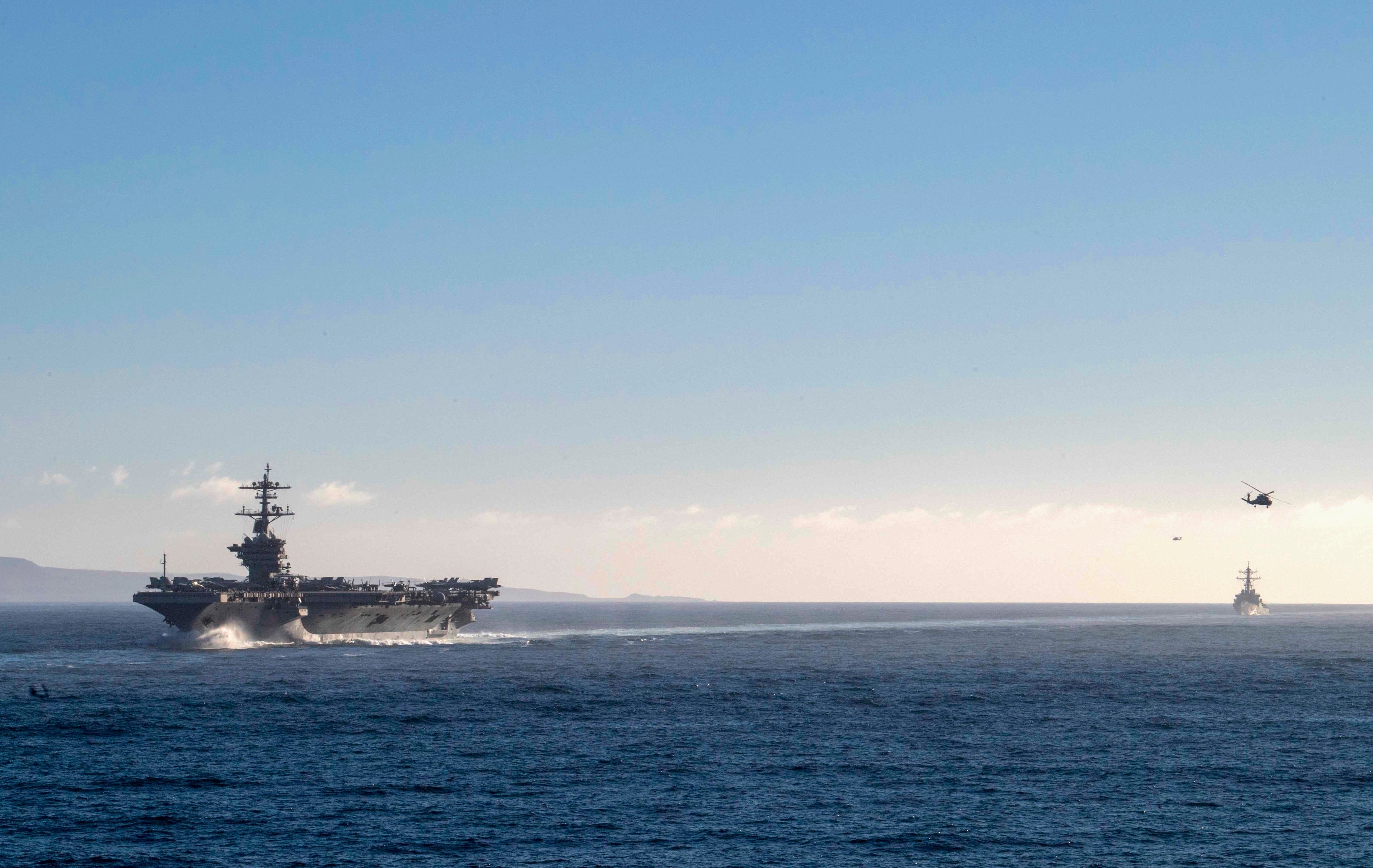
The top lawmakers overseeing Navy policy are optimistic the service can continue on its current trajectory of building a bigger fleet to take on threats in the Pacific under the Biden administration.
Speaking Monday at the Surface Navy Association’s annual symposium, Reps. Joe Courtney (D-Conn.) and Rob Wittman (R-Va.) were hopeful the Navy could keep pursuing its goals within the Pentagon’s strategy of great power competition.
Courtney, who chairs the House Armed Services seapower and projection forces subcommittee, said he spoke with President-elect Joe Biden’s national security team during the campaign. The Connecticut lawmaker pointed to Tony Blinken, Biden’s pick for secretary of state, as a member of Biden’s team who understands the U.S. strategy and its focus on the Indo-Pacific region.
“Even though he doesn’t come out of a [Department of Defense] sort of government background, he understood instantly and without any prompting from me, about what Rob sort of alluded to, which is that the Indo-Pacific region right now probably is the area of the world which is going to be the most significant, rising foreign policy challenge. And I think, obviously, military policy dovetails into that as well,” Courtney said of Blinken, who served in former President Barack Obama’s State Department.
While the two did not specifically discuss plans for the Navy, Courtney emphasized that Blinken’s understanding of the current strategic environment would enable the Navy to pursue the avenues needed for its shipbuilding objectives.
“There was nothing knee-jerk in terms of his response that I think would really mean that we’d have a very difficult job sort of making the case,” Courtney said, referring to Blinken.
The Pentagon under the Trump administration unveiled a new National Defense Strategy that stresses competition with countries like Russia and China, making the Indo-Pacific theater a focus for the services. While officials in both parties appear to agree that the U.S. military should prioritize preparing for a fight against China, it’s unclear how the strategy will evolve under the Biden administration.
“I believe it originates at the strategic level. I mean that’s really where making investment decisions of the magnitude that [Chief of Naval Operations] Adm. Gilday’s talking about, Rob mentioned. It has to flow from a strategic level,” Courtney said. “You’re not going to do it by … ‘I need to get more jobs in my district.’ That’s not going to fly when you’re talking about the size and also the consistency that’s required to get shipbuilding accomplished. It’s a long game at the end of the day.”
Wittman, who serves as the ranking member of the seapower panel, said that Defense Department leaders understand the Navy’s crucial role in a potential conflict in the Indo-Pacific and pointed to the service’s sealift responsibilities as an example.
“In the years going forward, any threat that we face, we are going to face them in a highly contested environment. And that needs to inform everything that we do,” Wittman said.
Alluding to Gilday’s appeal last year for an increase in the Navy’s budget to achieve its shipbuilding objectives, Wittman argued the service needs more than the traditional one-third portion of the budget that is typically split between the Navy, Army and Air Force.
“And the good news is is, I think leaders both in elected office and in the Pentagon are realizing how incredibly important the Navy is as a component of that and that you can’t get to where you need to be if you just continue to cut the pie one-third, one-third, one-third,” Wittman said. “The investment has to be there. And that’s I think an incredibly important point historically in where we go with making sure we have the navy needed for the future.”
During the panel, both Courtney and Wittman also emphasized their concerns about the Navy’s shipyard infrastructure and pointed to the aging public shipyards as a problem the service needs to solve.
“Looking at the Biden administration, some of its priorities, what needs to happen with the public yards fits in perfectly within an infrastructure agenda and also a workforce agenda,” Courtney said. “Because to the extent that we’re really going to get the productivity of the public yards up, this is really about investing in people and in American infrastructure.”
Courtney said Biden’s choice for labor secretary, Boston Mayor Marty Walsh, is uniquely suited to address this issue because of his experience in construction labor unions.
“This is totally within his space to really upgrade the public shipyards. And hopefully, again, we’re going to be able to have those kinds of conversations about saying this is something that’s been neglected for far too long,” Courtney said. “But the good news is is that you can really create a lot of opportunity for communities and young people in particular by really raising this to a higher level.”
While Courtney noted that Biden’s pick for defense secretary – retired Army Gen. Lloyd Austin – is not from the Navy, he pointed to December comments from another Army general, chairman of the Joint Chiefs of Staff Gen. Mark Milley. During the U.S. Naval Institute’s Defense Forum Washington conference, Milley argued that the Pentagon’s strategy would focus on naval and air power and that budget cuts would likely reflect that emphasis.
“He’s somebody that obviously knows Milley and is going to be on par or in parity in terms of just their influence in terms of military policy,” Courtney said of Austin. “And I think that that’s another reason why I think that Milley’s comments are so significant in terms of Milley sort of paving the way for possibly a different kind of budget that comes out of the Pentagon.”





